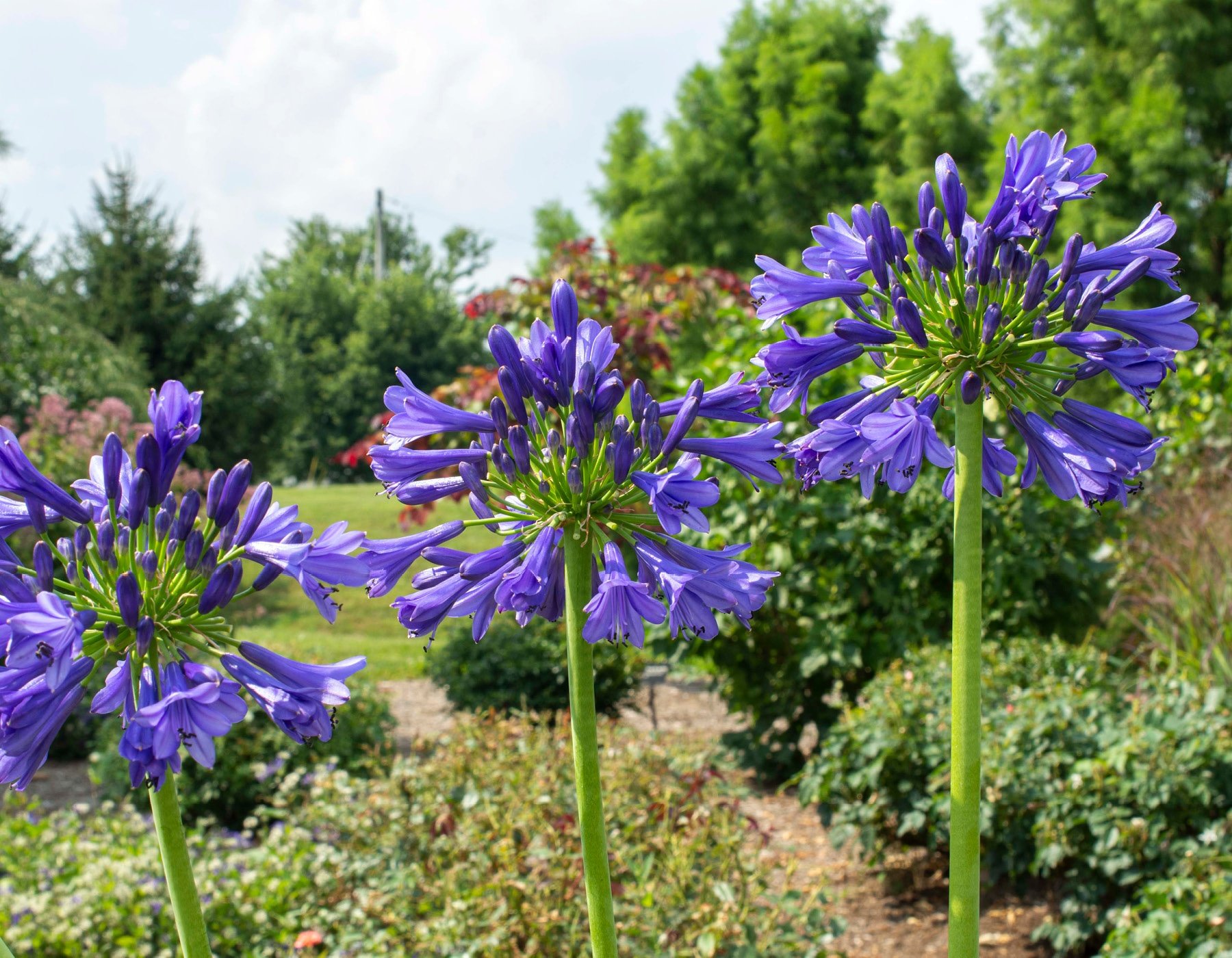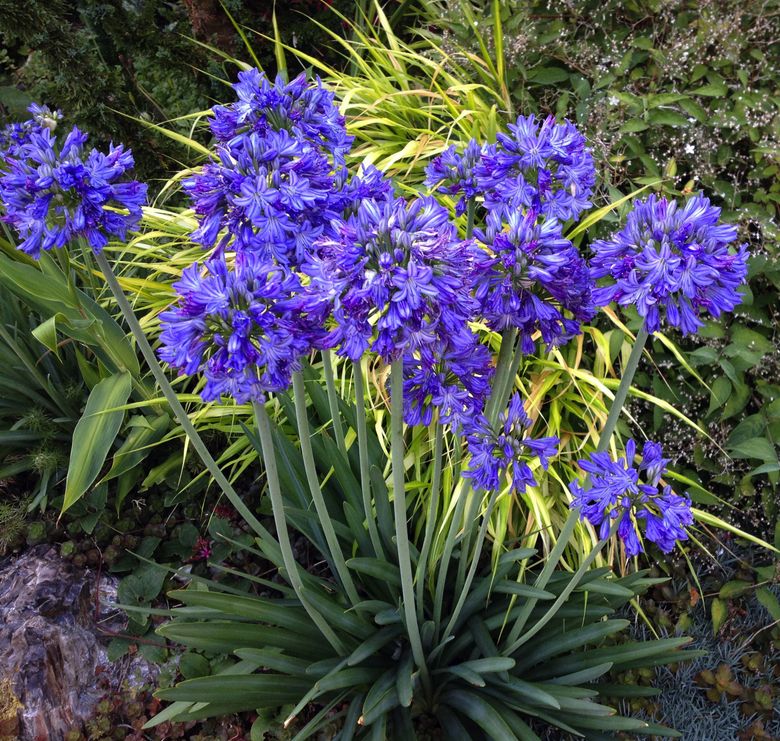Agapanthus Breeding: Tips for Expanding Your Plant Collection
Agapanthus Breeding: Tips for Expanding Your Plant Collection
Blog Article
Letting Loose the Secret to Effective Agapanthus Farming: Advice for a Flourishing Garden
In the world of horticulture, growing agapanthus successfully requires a tactical method that includes various elements of plant treatment. With mindful attention to information, one can unlock the keys to nurturing these spectacular blossoms, leading to a garden that thrives with elegance and vibrancy. By recognizing the nuances of agapanthus growing, one can create an environment where these plants flourish and grow perfectly. In the complying with discussion, we will certainly check out vital ideas and tricks that will certainly assist you towards a thriving agapanthus yard, providing understandings right into ideal practices, soil conditions, watering strategies, and a lot more.
Growing Agapanthus: Finest Practices
When growing Agapanthus, appropriate soil prep work is important for making sure successful growth and advancement of these lovely flowers. Agapanthus, typically known as Lily of the Nile or African lily, thrives in well-draining soil with a slightly acidic to neutral pH level - Agapanthus. Before planting, it is essential to amend heavy clay soils with natural matter such as garden compost or peat moss to boost drain and provide necessary nutrients for the plants
To grow Agapanthus, pick a place that receives complete sunlight to partial color, as this will advertise healthy and balanced growth and bountiful blooming. Dig an opening twice the size of the plant's root round and position the Agapanthus at the very same depth it was formerly expanding. Delicately backfill the hole with soil, weighing down securely to remove any type of air pockets around the roots.
Water the newly grown Agapanthus completely and remain to maintain the soil equally moist, particularly throughout the plant's active expanding period. Agapanthus. Applying a balanced plant food once a month can further support the plant's development and flowering. By complying with these ideal practices for planting Agapanthus, you can produce a magnificent display of these fascinating flowers in your yard
Ideal Soil Issues for Agapanthus
For optimal growth and blooming success of Agapanthus plants, ensuring the dirt problems are optimal is vital. Agapanthus likes dirt that is abundant in nutrients, so incorporating a balanced plant food during the growing period can advertise healthy development and vibrant blossoms.

Watering and Fertilizing Tips
To make sure healthy and balanced growth and vivid blooms, proper watering and fertilizing methods are important for effective Agapanthus growing. Agapanthus plants benefit from normal watering, especially during the growing season.
When it pertains to fertilizing Agapanthus, a balanced fertilizer with equal parts nitrogen, phosphorus, and potassium can be used in the spring to promote healthy development and blooming. Slow-release fertilizers are ideal for giving nutrients progressively over an extended period. Stay clear of over-fertilizing, as this can cause excessive vegetation growth at the expense of blooms.
Additionally, integrating organic issue like garden compost right into the soil can improve nutrient levels and improve soil framework, aiding in the overall health and wellness of the Agapanthus plants. By following these watering and feeding tips, gardeners can guarantee their Agapanthus plants grow and produce spectacular displays of flowers.
Pruning and Deadheading Techniques
Correct pruning and deadheading strategies play an essential duty in maintaining the health and wellness and looks of Agapanthus plants, matching the essential practices of watering and feeding for successful farming. Trimming Agapanthus includes getting rid of invested flower heads, yellowing or dead fallen leaves, and total shaping of the plant to advertise better development. Deadheading, the procedure of getting rid of discolored flowers, not just enhances the plant's appearance but additionally motivates more blooming.
When deadheading Agapanthus, it is suggested to clip off the blossom stem at the base making use of sharp, tidy shears. This process redirects the plant's power from seed manufacturing back into root and foliage development, advertising a healthier and a lot more robust plant. Regular deadheading can prolong the flowering period of Agapanthus and prevent self-seeding, which can lead to overcrowding.
In terms of trimming, Agapanthus typically gain from a light trim after my review here flowering to clean the plant her response and motivate fresh development. Reducing the spent blossom stems and getting rid of any kind of dead or damaged foliage aids keep the plant's vigor and overall appearance. Nevertheless, it is necessary to avoid cutting into the crown of the plant, as this can compromise its health.

Protecting Agapanthus From Vermins and Diseases
Carrying out effective pest and disease administration techniques is critical to guarding the wellness and vitality of Agapanthus plants in cultivation. One typical parasite that influences Agapanthus is the Agapanthus borer, a caterpillar that tunnels into the plant, causing damage to the fallen leaves and flowers.
In addition to pests, Agapanthus are at risk to conditions such as origin rot and fungal leaf areas. These concerns can frequently be avoided by making certain proper drain and staying clear of overwatering. If signs of illness show up, affected components of the plant must be immediately gotten rid of to prevent more spread. Fungicides may likewise be used as a therapy step, adhering to the producer's directions meticulously. By staying attentive and attending to insect and disease problems without delay, gardeners can assist their Agapanthus prosper and prosper.

Conclusion
In final thought, effective farming of agapanthus needs proper growing methods, suitable soil problems, appropriate watering and fertilizing, routine trimming and deadheading, and defense from conditions and bugs. By following these ideas and methods, gardeners can make sure a prospering yard full of lovely agapanthus blooms. Agapanthus. Remember to maintain constant care and attention to information to promote the health and long life of these magnificent plants
When growing Agapanthus, correct dirt preparation is look at this web-site essential for guaranteeing successful growth and development of these stunning blossoms.Water the recently planted Agapanthus completely and proceed to maintain the dirt evenly wet, specifically during the plant's active growing season.For ideal development and growing success of Agapanthus plants, making sure the soil problems are ideal is essential. When growing or transplanting Agapanthus, make certain the dirt is well-prepared to supply the required structure for the plants to establish themselves effectively. One common pest that impacts Agapanthus is the Agapanthus borer, a caterpillar that tunnels into the plant, triggering damage to the fallen leaves and flowers.
Report this page